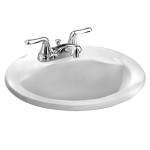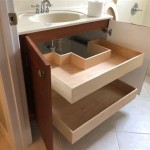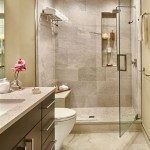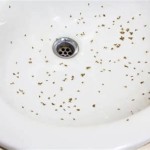What Plant Can I Put In a Windowless Bathroom?
Introducing greenery into a windowless bathroom can significantly enhance its aesthetic appeal and create a more relaxing atmosphere. However, the inherent lack of natural light presents a unique challenge. Not all plants can thrive in such conditions. Therefore, selecting plants specifically tolerant of low-light environments and high humidity is crucial for success.
The ability of a plant to survive in a windowless bathroom is primarily determined by two factors: its light requirements and its tolerance to humidity. Plants need light to perform photosynthesis, the process by which they convert light energy into chemical energy for growth. In the absence of sunlight, plants must rely on alternative light sources or possess an exceptionally low light requirement. Humidity, on the other hand, can be beneficial, as it reduces the plant's need for frequent watering. Many tropical plants, which are naturally adapted to humid environments, are well-suited for bathroom conditions.
Before introducing any plant, it is essential to assess the specific characteristics of the bathroom. Consider the average temperature, the humidity level after showering, and the availability of artificial light. If there is no natural light whatsoever, reliance on artificial light will be necessary to sustain plant life. LED grow lights are a particularly effective option, as they provide the necessary spectrum of light for photosynthesis without generating excessive heat.
Choosing the Right Plants for Low-Light Conditions
Several plant species are known for their ability to tolerate low-light environments. These plants typically have darker green foliage, which allows them to absorb more light. Some excellent choices for a windowless bathroom include:
- Snake Plant (Sansevieria trifasciata): This is a virtually indestructible plant that can withstand very low light conditions and infrequent watering. Its upright, sword-like leaves add a modern touch to any bathroom.
- ZZ Plant (Zamioculcas zamiifolia): Another highly resilient plant, the ZZ plant can thrive in almost complete darkness and tolerates neglect. Its glossy, dark green leaves create a lush appearance.
- Cast Iron Plant (Aspidistra elatior): As its name suggests, the cast iron plant is incredibly tough and can survive in very challenging conditions. It prefers low light and infrequent watering, making it an ideal choice for a windowless bathroom.
- Pothos (Epipremnum aureum): Although Pothos benefits from indirect light, it can adapt to low-light environments. Its trailing vines can be displayed in hanging baskets or allowed to cascade from shelves, adding a touch of greenery to the space.
- Peace Lily (Spathiphyllum): While peace lilies prefer bright, indirect light, they can tolerate low-light conditions, although they may not flower as readily. Their elegant white blooms and lush foliage make them a popular choice for bathrooms.
- Maidenhair Fern (Adiantum): Maidenhair ferns thrive in humid environments and can tolerate low light to medium lighting conditions. These do require daily watering and frequent misting.
When selecting plants, it is crucial to consider their mature size and growth habits. Opt for smaller varieties or plants that can be easily pruned to prevent them from outgrowing the available space. Also, be mindful of any potential allergies or sensitivities to certain plants.
Providing Adequate Artificial Light
In the complete absence of natural light, artificial light is essential for plant survival. Regular incandescent or fluorescent bulbs are generally insufficient for providing the necessary light spectrum and intensity for photosynthesis. LED grow lights are the preferred option, as they are energy-efficient and emit light in the wavelengths that plants need most. LED lights also emit less heat than other lighting options and are safer for use with plants that are in a humid environment.
The amount of artificial light required will depend on the specific plant species and its light requirements. As a general rule, plants that tolerate low light conditions will need at least eight hours of artificial light per day. More light to moderate light can be provided to plants that can adapt to low light conditions. A timer can be used to automate the lighting schedule, ensuring that plants receive consistent light exposure. The lights should be placed approximately 12-18 inches above the plants to provide adequate illumination without causing damage.
When using artificial light, it is essential to monitor the plants closely for signs of stress, such as yellowing leaves or stunted growth. If the plants are not thriving, adjust the lighting schedule or intensity as needed. It is also crucial to maintain proper ventilation in the bathroom to prevent the buildup of heat and humidity, which can create an unfavorable environment for plants.
Maintaining Optimal Humidity and Watering Practices
Bathrooms tend to have higher humidity levels than other rooms in the house, which can be beneficial for certain plants. However, excessive humidity can also lead to fungal diseases and root rot. It is important to strike a balance between providing adequate humidity and preventing the buildup of moisture.
One way to maintain optimal humidity is to use a humidifier or a pebble tray. A pebble tray is a shallow dish filled with pebbles and water. As the water evaporates, it increases the humidity around the plants. Misting the plants regularly can also help to boost humidity levels. These are also great ways to ensure your plants thrive in a low-light environment.
Watering practices are equally important. Overwatering is a common mistake that can lead to root rot. It is best to allow the soil to dry out slightly between waterings. The frequency of watering will depend on the specific plant species and the environmental conditions. As a general rule, plants in low-light environments require less frequent watering than those in brighter conditions. Always check the soil moisture before watering, and avoid letting the plants sit in standing water.
In addition to regular watering, it is also essential to provide adequate drainage. Ensure that the pots have drainage holes to allow excess water to escape. Using well-draining potting mix can also help to prevent waterlogging. Consider adding a layer of gravel or pebbles to the bottom of the pot to improve drainage.
Fertilizing plants in a windowless bathroom is not as critical as for plants in bright light. However, occasional fertilization can help to promote healthy growth. Use a balanced liquid fertilizer diluted to half strength, and apply it every few months during the growing season (spring and summer). Avoid fertilizing during the dormant season (fall and winter).
Regularly cleaning the leaves of plants is essential for maintaining their health and appearance. Dust and debris can accumulate on the leaves, blocking sunlight and hindering photosynthesis. Use a damp cloth to gently wipe the leaves clean, or rinse the plants under a gentle stream of water. This will also help to remove any pests or diseases that may be present.
By carefully selecting the right plants, providing adequate artificial light, and maintaining proper humidity and watering practices, it is possible to create a thriving indoor garden in a windowless bathroom. The addition of greenery can transform the space into a more relaxing and inviting environment, enhancing the overall aesthetic appeal of the home. Remember to monitor the plants regularly for signs of stress and adjust the care routine as needed.

18 Plants To Grow In A Windowless Bathroom Gardening Channel

16 Best Plants For Windowless Bathroom Decor

Plants That Thrive In A Windowless Bathroom With Pictures Indoor For Beginners

Three Plants That Thrive In Low Light Bathrooms Deuce Cities Henhouse

16 Best Plants For Windowless Bathroom Balcony Garden Web

Plants That Thrive In A Windowless Bathroom With Pictures Indoor For Beginners

What Plants Can Be Chosen For A Windowless Bathroom We Know Few Perfect Candidates

18 Plants To Grow In A Windowless Bathroom Gardening Channel

Plants That Thrive In A Windowless Bathroom With Pictures Indoor For Beginners

16 Best Plants For Windowless Bathroom Balcony Garden Web
Related Posts







